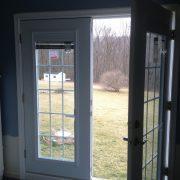5 Key Features That Keep Your Windows and Doors Energy Efficient
As the cost of living goes up and the world becomes more conscious about environmental conservation, a lot of people have decided to take steps to make their homes more energy efficient. Windows and doors are the main parts of the house that can contribute to energy inefficiency if they don’t shut properly, are too thin, or if they have spaces around them that let in drafts.
For this reason, it’s important to ensure that the windows and doors you choose for your house are built for energy efficiency. Below are 5 key properties that should guide you when making your choice:
- Quality of the frames
Window and door frames have always been built for strength and durability. But you also have to check whether they are energy efficient. For instance, aluminium is very strong, but is not energy efficient. To make frames energy efficient, they have to be filled with insulating foam to prevent energy loss. Most energy efficient frames produced today also have the added advantage of being customizable, catering for your personal tastes.
- Is the glass Low-E?
‘Low-E’ is a coating that works by reflecting infrared light to retain heat inside the house during the winter and keep heat out during the summer. The coating also reflects UV light, protecting your furniture and décor from fading.
- Multiple panes provide more insulation
Energy efficient doors and windows have at least 2 or more panes. As the number of panes increases, so does the strength of the glass and its ability to retain heat. When combined with other features such as Low-E, the glass will surpass energy-star requirements.
- Go for gas-filled panes as opposed to air-filled
The panes in energy efficient windows can also be filled with insulating gases to reduce conduction of heat. These gases, such as krypton or argon, are better insulators than air.
- Check the quality of spacers
Spacers are made of material such as foam, stainless steel or aluminum and are used for keeping panes well-spaced in order to minimize heat transfer. Good quality spacers should handle the flex that comes with expansion and contraction. If the spacers are not good quality, this movement can be lost, resulting in loss of the seal in the panes.






